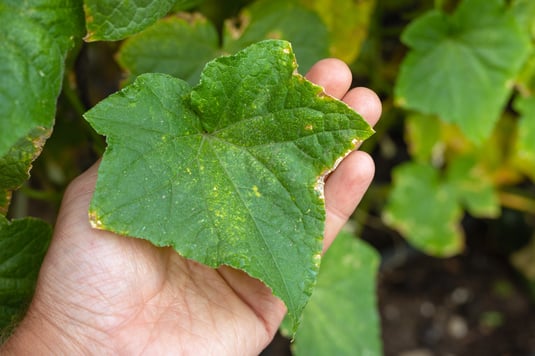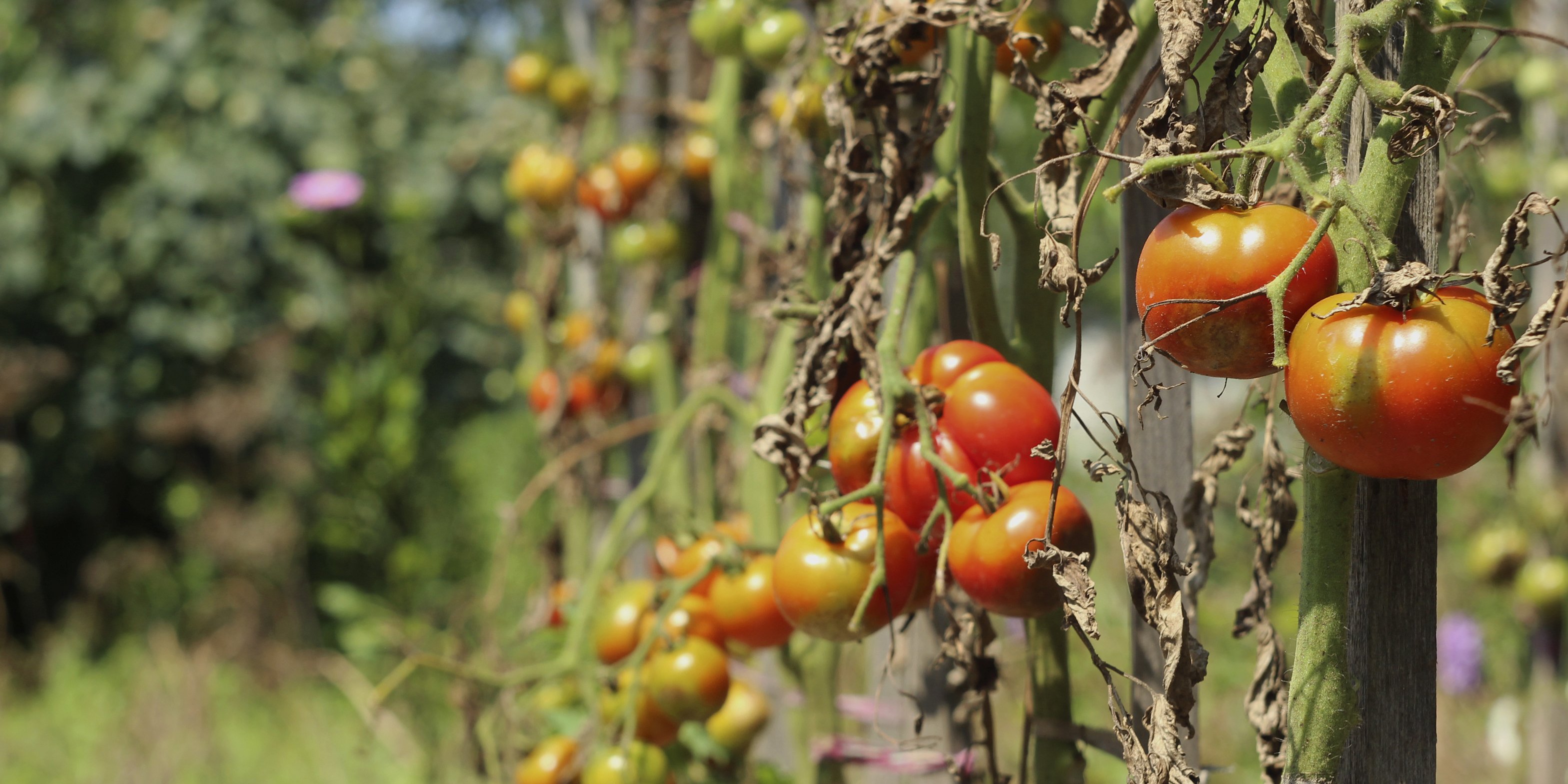Late blight is caused by Phytophtora spp, whereas early blight is caused by Alternia spp. The most apparent differences are how they appear on your plant. But what does this mean? How do we identify it, how do we prepare for it, and how to we remedy it?
Early blight affects mainly the stems, leaves, and fruits of a vegetable. You will most likely see the damage appear first on the branches and stems. In the earlier parts of the plants, you will notice that at the base of the stem are lesions that are slightly sunken in, typically dark brown, and in a ring pattern. When the plant is mature and infected with this disease, you will see the disease manifest as brown necrotic lesions. These will expand into a round hole with a yellow-green outline around it. Late blight looks a bit different but can affect the plants during the same stages of growth. In young plants and seedlings, late blight will appear as dark green water-stained lesions which can start on the leaf, and it can make it’s way to the stem which will have the color change from a healthy green to a dark brown and will become thin and potentially wilt and fold over.

Prevention is vital; early blight, for instance, can overwinter. Make sure you remove all plant debris from the area between growing seasons. Don’t keep seeds from an infected plant, as the disease can remain dormant in tubers as well as seeds. When you are removing infected areas, it is encouraged to burn the contaminated material. Drip irrigation is encouraged rather than overhead watering since splashing waters, such as rain, can aid in spreading the disease. You can use these cultural practices to help prevent late blight as well. Still, some other preventative measures for both blights would be using a preventative fungicide like Regalia. Regalia will help the plant prepare for a spore to try to inoculate itself into the plant. A rate of 2 Tbsp per gallon or 2 quarts an acre is an excellent way of ensuring that your plants do not run into the issue throughout the growing season. Keep in mind that both diseases can predate on the stress of nutritionally deficient plants. Do not hesitate to reach out to us for all your organic fertilization needs!
Even with all this prevention, you can still end up getting these diseases. What can you do to save your plant? First, remove whatever infected plants you have. Getting rid of them is a great way to stop further spreading of the disease. Using a product such as Oxidate, Jet Ag, or a Hydrogen Peroxide to kill off whatever spores are residing on your plants. Using one of these products after a rain will be beneficial to prevent more infection. After you kill off what is still active, you need to boost your plant up. Using Regalia at more aggressive rates such as 3 Tbsp per gallon or 3-4 quarts per acre will help the plants rapidly prepare to stave off further damage. Regalia, in combination with Fertrell Liquid #3, or some source of nitrogen to help spur additional vegetative growth and Kelp to help your plants deal with the extra stress from these diseases. Using these products in rotation with Stargus applied at the same rate as Regalia. It should be foliar applied bio-fungicide that will help control the disease are both excellent tools to help gain control back in your grasp as you finish off this growing season! As you prepare for the next growing season, do not hesitate to reach out to us here at Fertrell and we would gladly help you create an Integrated Pest Management (IPM) system that will work for you!
